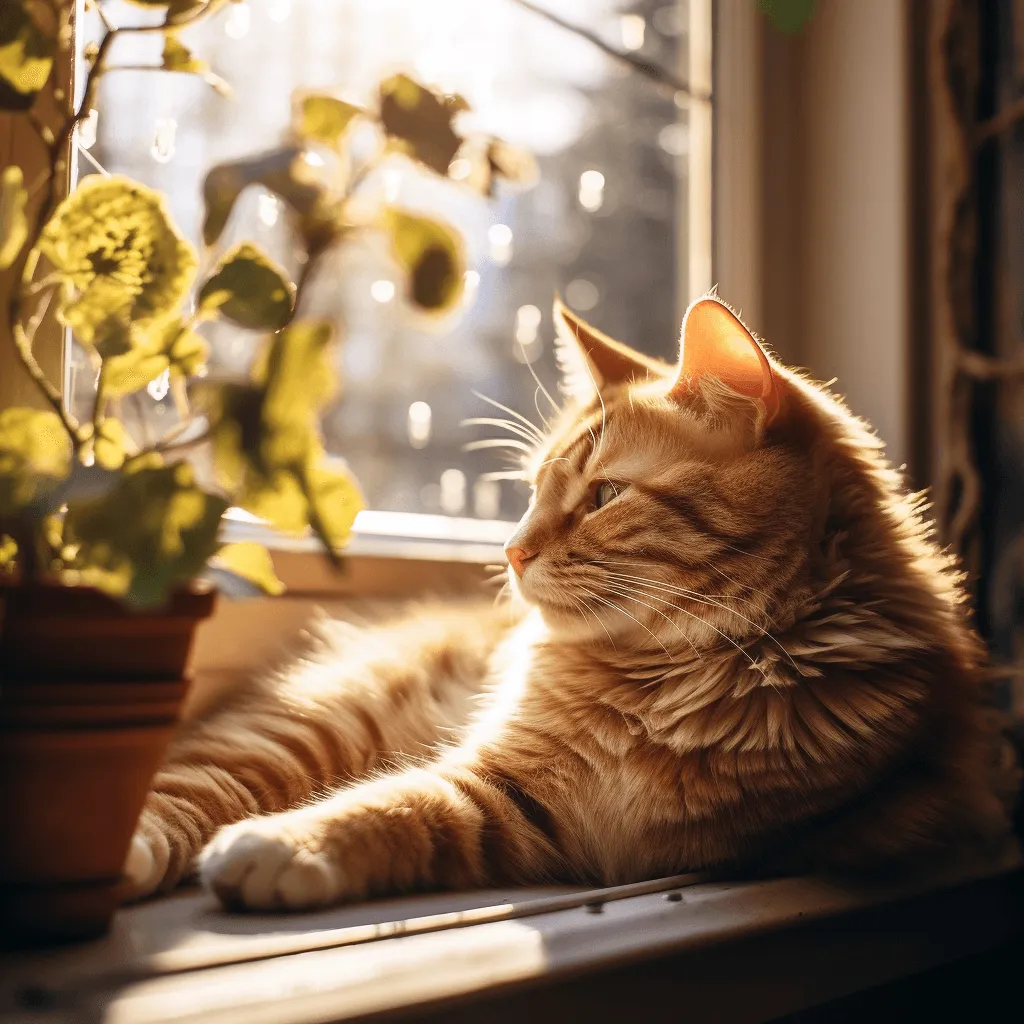Why Do Cats Hide?
Cats hide for various reasons, and it's a natural behavior rooted in their instincts and temperament. Some common reasons why cats hide include:
- Safety and Security: Cats are solitary hunters by nature, and hiding provides them with a sense of safety and security, especially in unfamiliar or stressful situations.
- Territorial Behavior: Cats are territorial animals, and hiding allows them to establish their own space and feel in control of their environment.
- Fear and Anxiety: When faced with loud noises, strangers, or changes in their surroundings, cats may seek hiding spots as a way to cope with fear and anxiety.
- Illness or Injury: Cats may hide when they are feeling unwell or in pain as a way to protect themselves from potential threats.
- Environmental Changes: Cats can be sensitive to changes in their environment, such as the introduction of new pets or moving to a new home, leading them to seek hiding places until they feel comfortable.
- Play and Hunt: Sometimes, cats may hide as part of their natural hunting instincts, simulating stalking and pouncing behaviors.

What Does It Mean When A Cat Hides
When a cat hides, it can indicate various emotions and needs. Some common reasons why a cat may choose to hide include feeling scared or anxious, adjusting to a new environment, feeling ill or in pain, seeking solitude, avoiding social interaction, feeling threatened, and experiencing stress or change. Overall, cat hiding behavior can vary based on their personality and the specific circumstances. It's essential to observe their body language and behavior to better understand their emotions and create a safe and comfortable environment for them.
How To Find A Hiding Cat In Your House
In a house, there are numerous hiding spots where a cat may seek refuge, and some of them can be quite unexpected. It might curl up in the back of a closet or sneak under the bed, places you wouldn't even think to look. So, when your cat goes missing, be prepared to search diligently. Arm yourself with patience, grab a flashlight, and get ready to explore every nook and cranny of your home in search of your beloved companion. The process of finding a hiding cat requires time and thoroughness, but the relief of locating your furry friend will be worth the effort.
Look Under And Inside Furniture
When searching for a hiding cat in your house, remember to thoroughly check under and inside furniture. Cats love finding cozy spots like under the couch, behind cabinets, or inside closets. Be sure to peek into every possible hiding spot to increase your chances of finding your feline friend.
Search Electronic Appliances And Machines
Cats may be attracted to warm spots near electronics like the back of a computer or the top of a refrigerator. Carefully inspect these areas, as your furry companion might have found a snug hiding spot there.
Check Behind Drywalls And Your Hvac Systems
Cats are agile creatures and may find their way into tight spaces or vent openings. Use a flashlight to explore these areas carefully and see if your feline friend has taken refuge there. Be patient and methodical in your search to ensure you cover all possible hiding spots.
Lure Your Cat With Food
If your cat is hiding and you want to entice them to come out, try luring it with food. Choose their favorite treats or wet food with a strong aroma that can pique its interest. Place the food near its usual hiding spots or create a trail leading to a more open area. The enticing scent may coax your cat out of its hiding place and back into your sight. Remember to be patient and give it space if it still feels shy or anxious.
Search For Your Cat In The Dark
If you've searched all the usual spots with no luck, try searching for your cat in the dark. Cats are nocturnal animals and may feel more comfortable exploring their surroundings at night. Use a flashlight to carefully check dark corners, under furniture, and other hiding spots. The dim lighting may make your cat feel less exposed and more likely to come out of hiding.

Cat Hiding Places Ideas
Cats are experts at finding creative hiding places around the house. Some common cat hiding places include:
- Under the Bed: Cats often seek shelter and privacy under the bed, where they can feel safe and secure.
- Behind Furniture: Couches, chairs, and other large pieces of furniture provide excellent hiding spots for cats.
- Inside Closets: Cats may find their way into open closets and cabinets, making them hard to spot.
- Empty Boxes: Cats love hiding inside empty boxes, using them as cozy dens.
- Laundry Piles: Warm and soft laundry piles can be attractive hiding spots for cats.
- Window Sills: Cats may perch on window sills or hide behind curtains to observe the outside world.
- High Places: Cats feel more secure at elevated spots, such as on top of bookshelves or cabinets.
- Narrow Spaces: Cats can squeeze into narrow spaces like behind appliances or between furniture.
- Inside Bags or Luggage: Unattended bags or suitcases can be inviting hiding spots for curious cats.
- Indoor Plants: Cats might explore indoor plants and find a secluded spot among the leaves.
Remember, when searching for a hiding cat, approach calmly and use patience. Loud noises or sudden movements may further scare them into deeper hiding. Providing a peaceful environment can encourage your cat to come out on its own terms.

How Long Can A Cat Hide In The House
The length of time a cat can hide in the house can vary depending on several factors, including the cat's personality, the reason for hiding, and the available hiding spots. Some cats may hide for just a few minutes or hours, while others may remain hidden for several days or even longer.
The key to helping a hiding cat feel more comfortable is to provide a calm and quiet environment, as well as access to its usual resources like food, water, and a litter box. It's important to give it time and space to come out on its own terms, as forcing it out of their hiding spot can add to their stress.

What To Do When You Find A Cat
When you find your hiding cat, avoid chasing it as it can cause stress and problems. Instead, use food as a lure. Start feeding it in the area where it is hiding. Be patient and don't panic if it takes a few days for it to respond. Food will eventually win it over, and as long as you know where the cat is and it can't escape, it should feel more secure over time. If necessary, you can consider using a humane trap.
How To Lure A Cat Out Of Hiding
Luring a cat out of hiding requires a patient and gentle approach. Create a safe and comfortable space with familiar items, such as its bed, toys, litterbox, and favorite collar. Use tempting smells, like its favorite treats or food, near the hiding spot to entice it to come out. Try using a wand toy or interactive game to engage your cat and make the process more enjoyable. Speak to your cat in a soothing tone and avoid sudden movements or loud noises. Allow your cat to come out on its terms, giving it space and time to feel comfortable. Spend time nearby, letting it observe you without feeling pressured. Be consistent in your efforts and visit the hiding spot regularly with treats and gentle interactions. Remember that each cat is unique, and it may take time for it to feel safe enough to come out. Avoid aggressive attempts to force it out and provide reassurance and patience. If your cat continues to hide excessively or shows signs of distress, consider seeking guidance from a veterinarian or a professional animal behaviorist.
What To Do If You Don’t Find A Cat
If your cat is not found inside your home, carefully inspect all corners and potential hiding spots where it could be concealed. Check windows and openings to see if it might have slipped outside, which may require expanding the search area to look for it outdoors.

